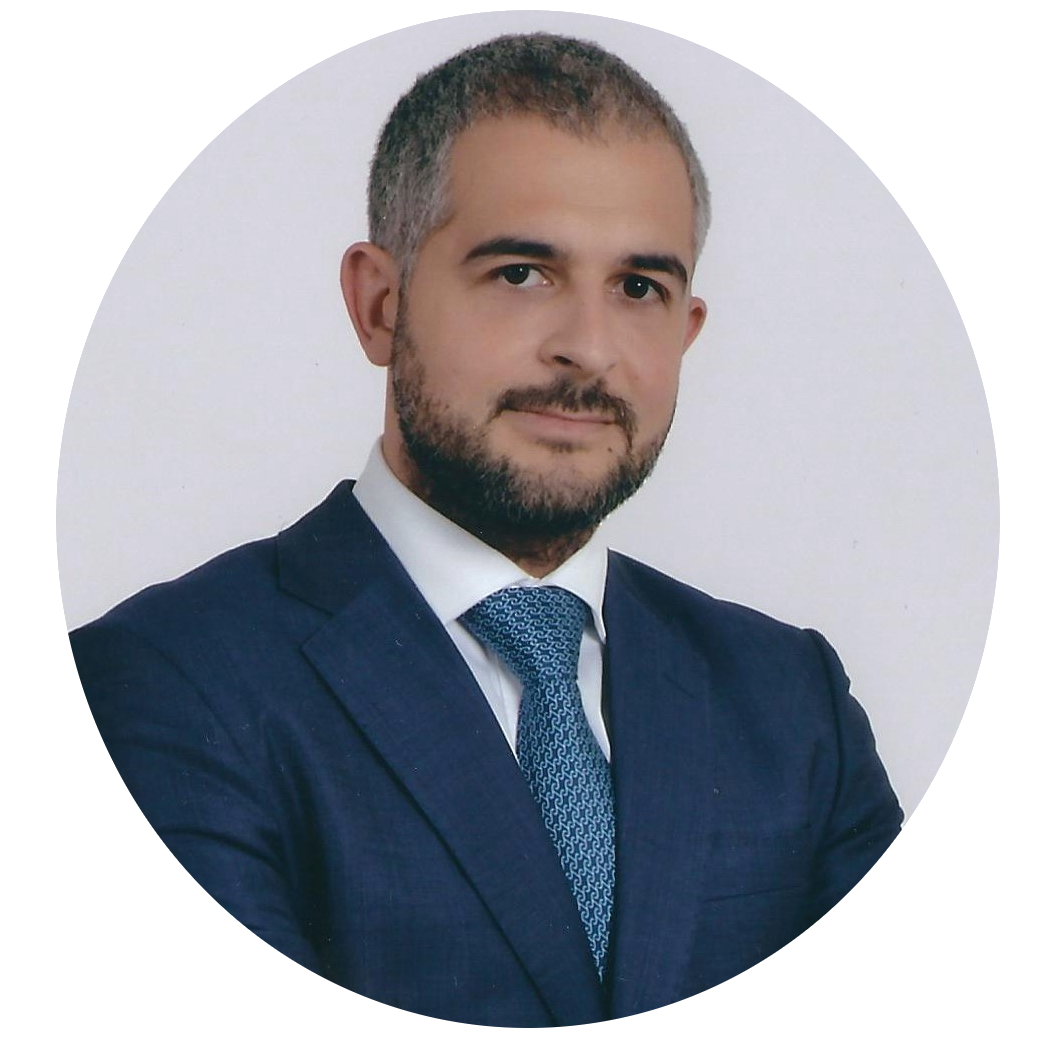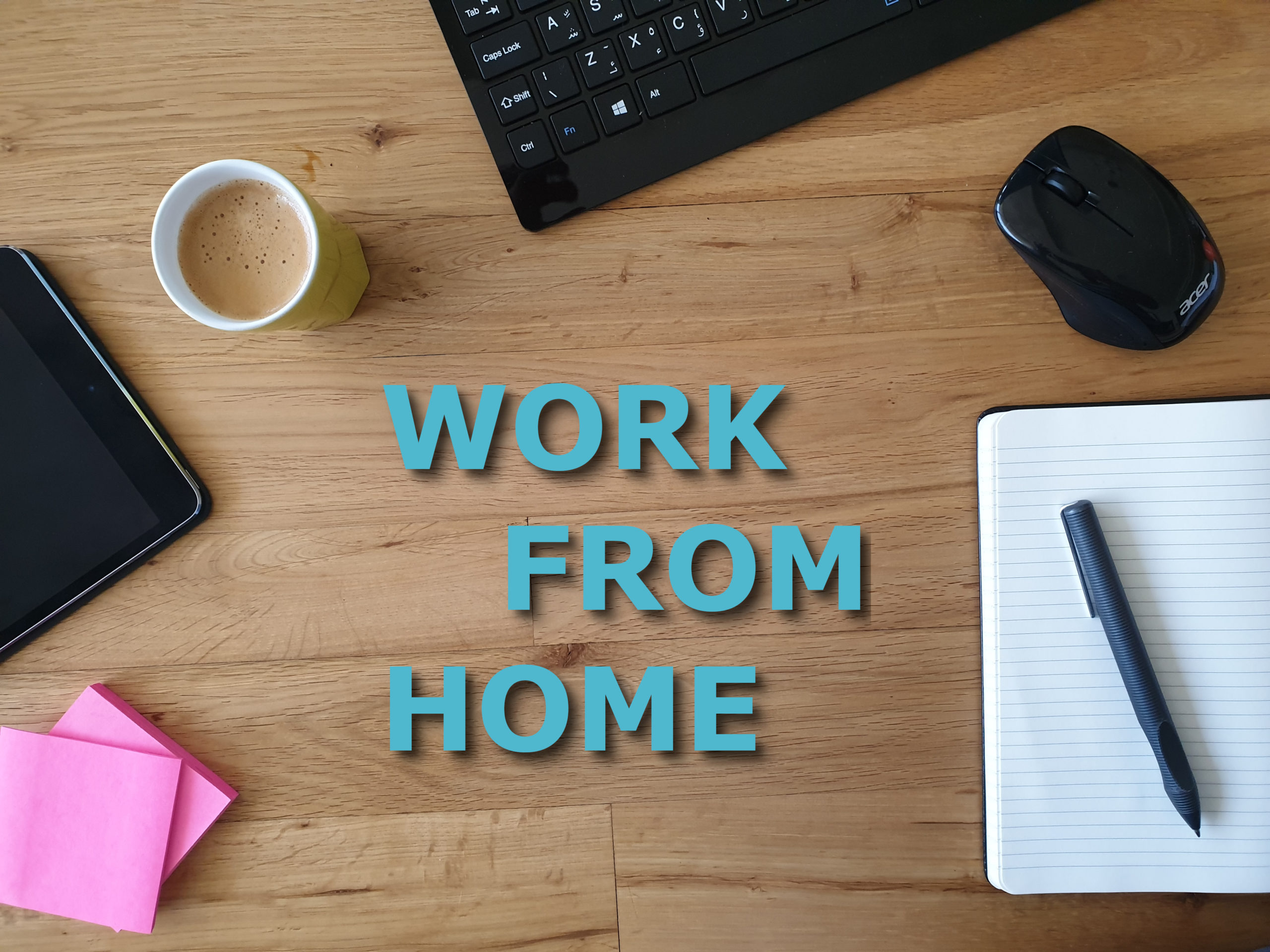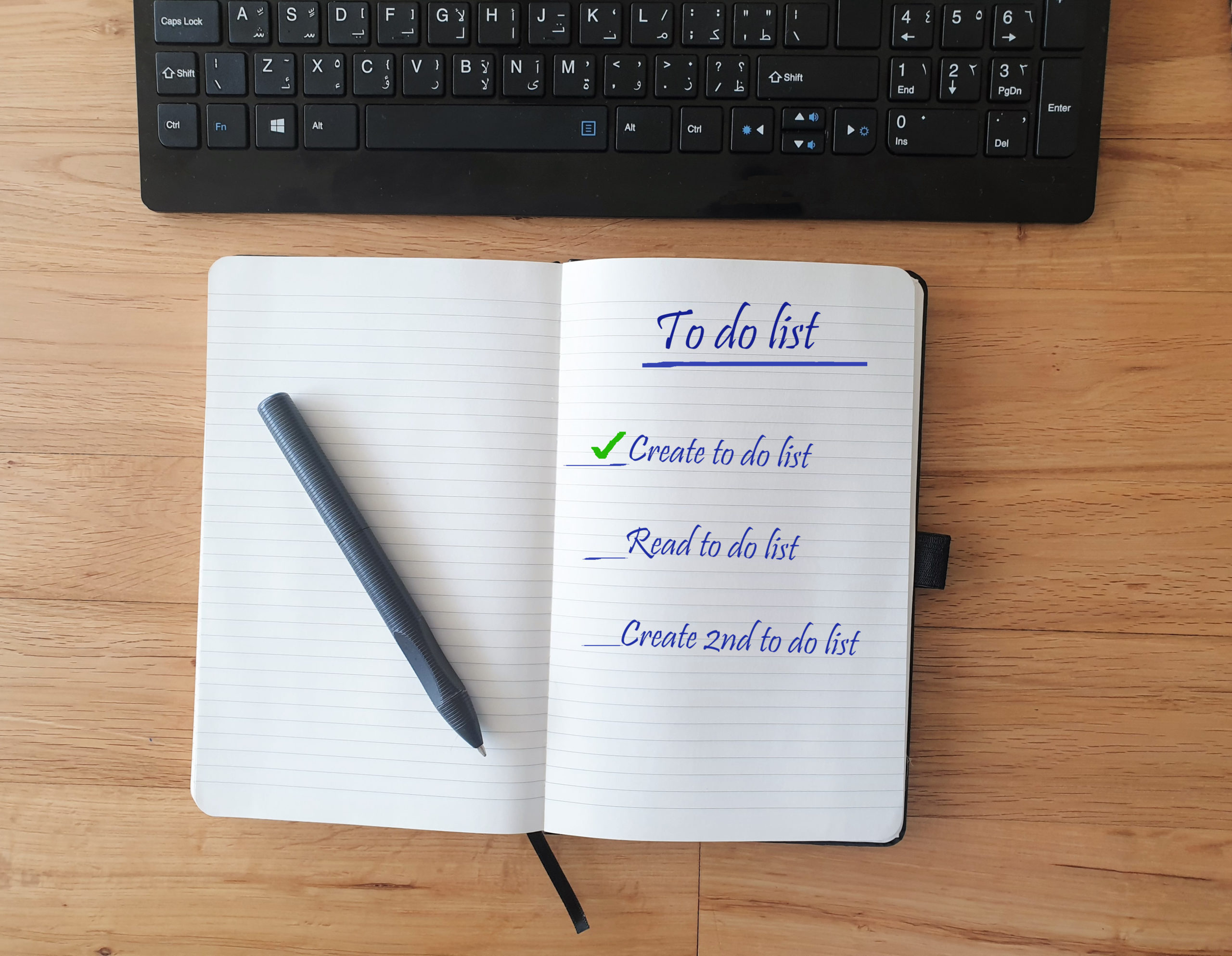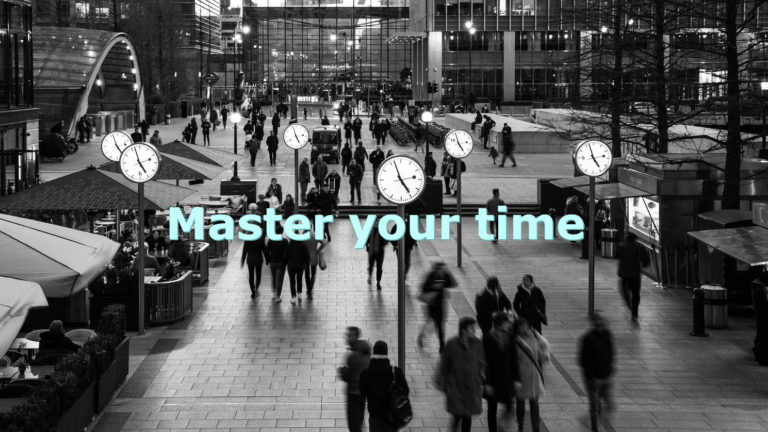H
ome office can be scary at first. With so many temptations and no direct scrutiny from your boss and colleagues, your living room could quickly become the Disneyland of procrastination.
No reason to panic. Keep in mind your workload is no different, you are already accustomed to collaborating by email, conference calls, and video-conferences and you are saving a lot of time by not commuting to your office.
This article will provide you with the necessary tools to skyrocket your productivity while working from home.
The illusion of productivity
There is no shortage of recommendations related to the selection of collaborative programmes, management of to-do lists, improvement of home office ergonomics, and leveraging modern communication tools. Unfortunately, these tips and tools alone will not suffice to boost your productivity.
A frenetic pace of completing to-do lists, answering emails, and attending conference calls can give people the illusion of being productive. Paradoxically, and contrary to popular belief, being so busy you did not have time to eat lunch and finishing late every evening is often not a good indicator of productive work. Overworked people tend to make more mistakes and mistakes lead to additional work that indeed keep them busy.
Productivity’s kryptonite
To be productive, we have to understand some of our mind’s basic features.
It has been proved through many studies and experiments that interruptions and switching from one task to another kill productivity. Some of these studies measured the time our brain needs to refocus after being interrupted and the majority of them estimate this lap of time to sit around 20 minutes.
Switching from one task to another also hinders productivity. Jeff Sutherland, Co-creator of Scrums, shared a brilliantly simple exercise that you can try at home to witness the limitations of our brain. Take a pen, a paper, and a timer. Time yourself and write as fast as you can Arabic numerals from 1 to 10, Roman numerals from I to X, and letters from A to L, line by line, horizontally, in the following manner:
1 I A
2 II B
3 III C
…
10 X J
This should take you around 40 seconds.
Now do the same but write it column by column, so numbers from 1-10 first, then numbers from I to X and finally letter from A-J.
It will take you half the time you needed to complete it doing it line by line.
This is because every time you switch to a different setting, your brain needs time to adapt. The same holds true when switching between different projects, different tasks, and different tools.
With very few exceptions, human brains are wired to be the most productive when working for short but uninterrupted periods of time on the same or similar tasks.
The productivity paradox
Research shows that our brains reward us for the exact same habits that kill our productivity.
Our brains love novelty and reward us for it. Chris Bailey, in his book Hyperfocus, goes into minute details on how switching from one task to another, reading a new email, receiving a WhatsApp message, being liked on Facebook, passing a level in a video game, getting more views on your LinkedIn article all give our addict brains a small rush of dopamine, the same chemical that is released when people use drugs, have sex, or take a bite in their favourite junk food. Even in small doses, it is a powerful incentive and our brains are always on the lookout for a quick shot.
Besides being a dopamine junkie, you may not be aware of it, but our brain drifts very often during the day.
We spend 46.9% of the time thinking about something different than what we are doing.
It is often stated that 20 minutes is the magic figure regarding our maximum attention span. This is why TED Talks request speakers to keep their presentation under an 18-minute threshold.
False friends – Productivity tools
In recent years, we have been pursuing productivity goals and have developed numerous and wonderful tools such as emails, synchronized calendars, collaborative working programmes, and most important perhaps, smartphones. One has to wonder whether this productivity-race has not backfired. Thanks to these enhanced tools, we have never been interrupted so often nor our brains bombarded with so many temptations to switch activities.
So how can one stay productive in an environment of constant interruption and endless distraction with a brain constantly looking out for quick dopamine shots?
Managing interruptions
Interruptions are either caused by an exterior source, a colleague asking you something, your spouse calling you, a bird singing at your window. Or, they can be self-inflicted, your mind drifts, you get up to look out the window, you pick-up your phone and check your LinkedIn account though you checked it less than 5 minutes ago, etc.
In both cases, simple habits can help us manage these very counterproductive interruptions.
One positive aspect of working remotely, is that no colleague can just pass by your office or shout through the open space to question you. Thus, you have more control on interruptions when working remotely. You now only need to take control of your focus, your phone, your emails, and virtual meetings. We shall see below how to achieve this.
1. Taming the beast
The uncontested champion of interruptions is your smartphone. It is an inexhaustible source of novelty which your brain is so eager to get. It is so powerful, studies demonstrated that even when you are not using your phone, its mere presence on your desk is sufficient to distract you and cripple your productivity.
We pick up our phones 58 times a day in average including 30 times during work time.
By now you understand how much this can undermine your work.
There are several possibilities to tame this monster of distraction according to the level of focus you need to complete a task.
Of course, the best solution is to simply turn it off and lock it up in another room, but this most probably does not fit your line of work.
A good alternative is to silence all notifications and keep the smartphone in your drawer (you can wear the headphones), this way you will hear the calls but not be distracted by other features of the phone too often.
Alternatively, you can use apps such as Forest, that will block your phone (calls still come through) for a desired amount of time during which a virtual tree will be growing. To use your phone before the end of the set period, you will have to confirm you are willing to kill your virtual tree.
Adding one step to view your apps such as opening a drawer or killing a virtual tree will make you gain consciousness of the number of (useless) times you view your phone and drastically reduce this bad habit.
If you must keep your phone in sight at all times, try reducing its attractiveness. The display of a shiny icon highlighting that you have new unread messages will cause an irresistible urge to click on it. This is why you should only keep essential apps on your home screen such as your calendar and move apps with notifications such as WhatsApp and emails in subsequent screens.
Being obliged to scroll further to see notifications and useless apps will reduce the number of times you frenetically check for new notification and visit social media. As far as possible, take the habit to use another device for distractive activities. For example, I use a tablet for LinkedIn browsing, chatting, watching YouTube, etc. Thus, the tablet became the distraction tool and it is not in the room I am working from.
With these simple steps, your brain will be much less aroused by the view of your smartphone, resulting in less interruptions and enhanced productivity.
2. Building blocks
Try grouping similar tasks such as sending emails, having phone calls, and virtual meetings together.
One solution is to have predetermined slots of time for specific activities. For example, you can try and establish that except in cases of emergency, calls can only be scheduled between 2 and 6 p.m. You can of course adjust timings according to your activity, to apply this only on certain days or just have a 1-hour period a day during which no calls or conferences are allowed. This will push people to think twice about the necessity of their requests.
Of course, there will be exceptions, but establishing call-less periods will drastically reduce the number of times you are interrupted.
For this to work, you need to share the idea with your boss, colleagues, and when possible, clients. To make acceptance smooth, ask to run a test period of two weeks and see how it works out. Surely, this will remain in place after the trial period and you will be the one remembered for it.
3. Keep your inbox empty
We spend a tremendous amount of time reading and answering emails, chat messages, SMS, etc. In particular, when working remotely as a quick shout across the office will not get you any answer.
Clearing your inbox with an incessant flow of emails can feel like a modern version of Hercules’ labours. The good news is that you can certainly cut by half the number of emails you receive.
Take the habit of drafting emails that limit back and forth exchanges. Avoid this type of conversations that I have witnessed far too often:
You: Hey Jim, I’d like to discuss the report you shared yesterday.
Jim: Sure, happy to explain over the phone.
You: Great, can I call you at 2 p.m.?
Jim: Unfortunately, this does not work for me how about 3 p.m.?
You: I can’t at 3 p.m. how does your day look like on Thursday?
….
You will end up having sent 5-6 messages and received the same number in return to arrange a simple call. The situation worsens if other people are copied on this exchange as it multiplies the number of useless emails in your company (we will see how to address this later in the article).
You could have written the initial email as follows:
You: Hi Jim, how about a call either at 10 a.m. or 2 p.m. Tuesday or Thursday to discuss the report? If you are not free on those days, please suggest two alternatives.
Jim: Thursday 2 p.m. works. I will be waiting for your call.
Congratulations, you just divided by 5 the number of emails related to this meeting in your inbox. If you and your colleagues apply this principle to all emails, you will have a massive reduction in the number of emails in your company.
In addition, establish some ground rules on who should be copied on what. For example, stop keeping people in copy to say thank you and reply you are welcome unless you wish to publicly thank a person and highlight her or his achievement.
Imagine you remove 15 people who are in copy of an email sparing them your “thank you” message and the “you are welcome” reply. By simply clicking “reply” instead of “reply to all” you just saved your company a total of 30 useless emails crowding your colleagues’ inboxes.
You may think, come on Karim, it only takes 5 seconds to read the thank you email. True, but if you consider the bigger picture it has a massive impact. If these 15 people you removed from the chain of emails pick-up the same habit and spare your team from being copied on one “thank you email/you are welcome” exchange a day and we count 15 seconds to open, read and close the email, you just saved a cumulated 500 working hours per year (approximately 3 months of one fulltime employee).
Now imagine the amount of time wasted with the simple formality of replying to all to say, “thank you”, “great”, “I will send you a calendar invite”, etc. in multinationals counting over 200’000 employees.
4. Take a look in the mirror
You may have guessed it already, when it comes to distraction, you are your toughest enemy.
You have to accept that you will never be focused all day long. The key to productivity is to understand more about your own capacity to focus. What is your preferred environment, what times of the day are you at your best and what tends to distract you the most? This is different from one person to another, some are morning people, some are grumpy and useless before 11 a.m., some like to work with music in the background, etc…
For example, when I wake up, I can work like a cyborg throughout the morning but after lunch I feel like Garfield. Some tasks require maximum focus and some very little. Make sure you schedule your day according to your energy level. In my case, I don’t plan to do payment filing in the morning and design a new training module just after a plate of gnocchi with Gorgonzola at lunchtime.
5. Drive
As much as you can, once you started a task, try to focus on it without interruption until it is completed. In particular simple tasks. If you start drafting an email, do not stop midway to do something else.
If a thought suddenly drifts your attention such as I forgot to call my mother, or why is my dog’s nose wet (before you stop reading to start looking up the answer, it helps them smell better and cool their bodies), just write it down to get it off your mind and get back to it once you completed your email. This will also allow you to better understand what thoughts are distracting you the most.
6. Run but rest
Be conscious of your limits, take breaks and use the pomodoro technique.
This technique invented by Italian student Francesco Cirillo advocates that working in bursts of 25 minutes followed by a 5 minute break is optimal to keep your focus (the name comes from the kitchen timer he used at the time that was shaped as a tomato, pomodoro in Italian).
You can use the phone blocking apps such as Forest to time your work sprint and ensure it goes uninterrupted. Do not be afraid to start little such as 5 minutes of focused work followed by one minute of break and increase the time gradually to 25-5. Progress is usually fast.
Working in sprints (pomodoro technique), knowing you are most productive at from 8:00 to 9:45 a.m. and having established matching call-less timings within your company will still not be enough to guarantee you are productive. The most important aspect is that you keep yourself motivated to complete the most important tasks at hand. Especially, if you are working remotely with no immediate peer pressure and a well-diversified portfolio of distractions.
Below we shall see how to keep motivation level high and lure your brain into becoming more productive.
7. Eat the frog
This expression from Mark Twain made popular by Brian Tracy, motivational and self-development mogul, states that if you start your day by eating a live frog, you can enjoy the rest of your day knowing the worst part of it is probably behind you. In practice, this means, starting your workday by the most daunting task, such as an unpleasant conversation with an employee, a report to finalise, reviewing insurance policies, etc.
This technique is well-suited for remote work as you have no commuting to distract you. Get up and before opening your emails, checking the news, etc. swallow that frog. While there will be no charming prince at the outcome, the relief of being done with an unpleasant task that was lurking for some time or the feeling of having accomplished something meaningful will give you a flush of dopamine exceeding anything your smartphone could have provided you.
8. To-do list fallacy
I know people who are very proud of their to-do lists that are populated with tasks such as “reply to Sally’s email to decline invitation to team lunch”. They get satisfaction and a tiny dopamine shot out of completing and crossing off these items from their lists. This is not being productive in the least.
Productive people use the 2-minute rule popularized by David Allen in his illustrious book Getting Things Done.
The rule is simple. A task that can be completed in under two minutes should be done immediately. Keeping it in a memo, retrieving it and completing at later times will take you more than two minutes. Therefore, it is counterproductive to delay its execution.
Instead of fooling yourself by ticking boxes and completing easy and unproductive tasks, breakdown important tasks and reward yourself with the satisfaction of completing intermediary steps. For example, finalizing the introduction of a report or even a paragraph can be a target for a focused work session.
To keep your energy levels high, always keep in mind the final achievement and the benefits you will get out of completing this task within the bigger picture. You have to visualize the positive string of events and its final outcome. Adding a reward will boost your motivation even further.
9. Reward yourself
We have seen that our brain rewards some bad behaviours such as constantly switching tasks, browsing the web, and playing video games. We can exploit this weakness to lure our brain and keep ourselves motivated and focused.
Just as you would proceed with a kid so that he tidies his room, promising yourself a reward for keeping focus will work wonders. You just need to find the best-suited reward. Often, the best rewards are the things that distract you the most.
For example, if you are doing a pomodoro sprint of 25 minutes work and 5 minutes break. Reward yourself during that break with a tutorial on how to make a perfect egg roll (this has 18’000’000 views on YouTube so I assume many enjoy this), go checkout your favourite singer’s new hairstyle, eat a snack, pet your cat, do whatever usually diverts your attention. Establish the reward before starting the task so that you have an enjoyable event to look forward to. That way, you are actually managing your distractions. When you finish an important report, treat yourself with your favourite meal or activity. If you close a big deal, go shopping and buy yourself something fancy or take a day off and do something you enjoy, etc.
This is how you trick your brain. Soon, he will become hooked on completing important tasks as he will quickly understand that the rewards for staying focused are greater than the quick dopamine rush provided by your smartphone and social media.
10. Keep in shape
Both mental and physical exercise have an unending list of proven benefits including enhancing the capacity to focus. Not having enough time is not an excuse, especially if you are working from home. Yoga, push-ups, stretching, meditation, rope skipping, pick whatever you enjoy and can do remotely and just do it. If you do not know how to do it, browse YouTube during a pomodoro break and you will find infinite sources of home workouts.
Get enough sleep, in particular after a day that included a workout session, your body and mind will be sharper than ever.
Anybody can learn how to become super productive from home. Some of my recommendations may seem like small changes or simplistic, but carried out together and consistently, they will drastically boost your productivity.
If after reading this article you wish to improve your or your organization’s productivity, simply contact us and we will get back to you very swiftly.

Karim Radwan
Founder of Impactus Consulting
Karim Radwan is a self-directed project management professional with extensive experience in both the private and the public sectors. Domains of work include, banking, FMCG, and development projects. Regardless of the industry, Karim witnessed high potential for improvement in project management methodologies, productivity enhancement and crisis management. His taste for entrepreneurship decided Karim to establish IMPACTUS Consulting in Dubai to help companies around the world adapt, innovate and prosper in shifting environments.





Your stuff is incredibly exciting.